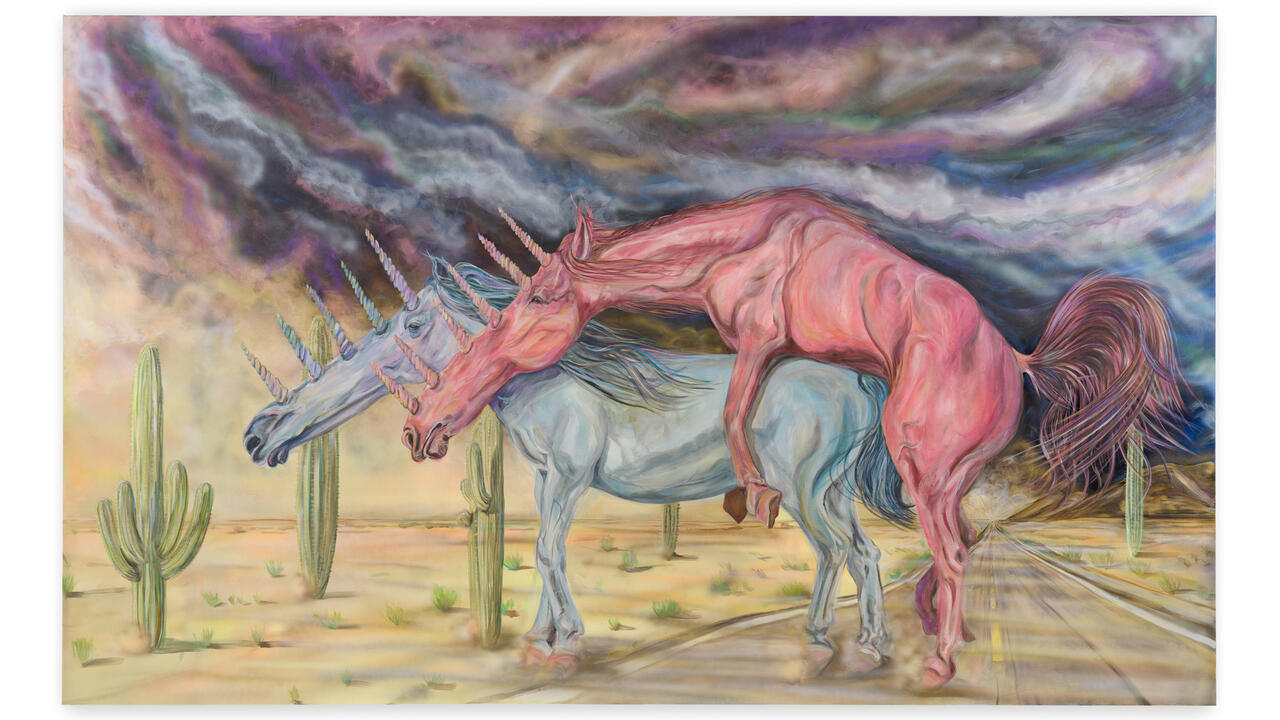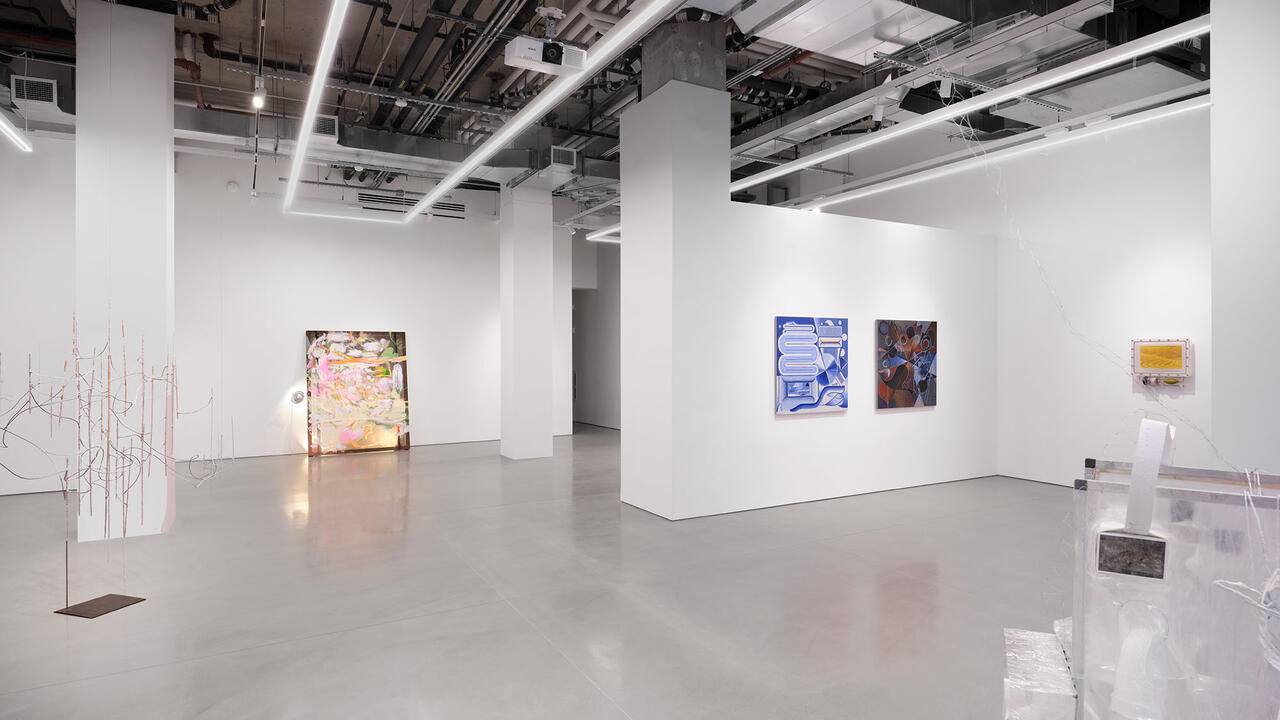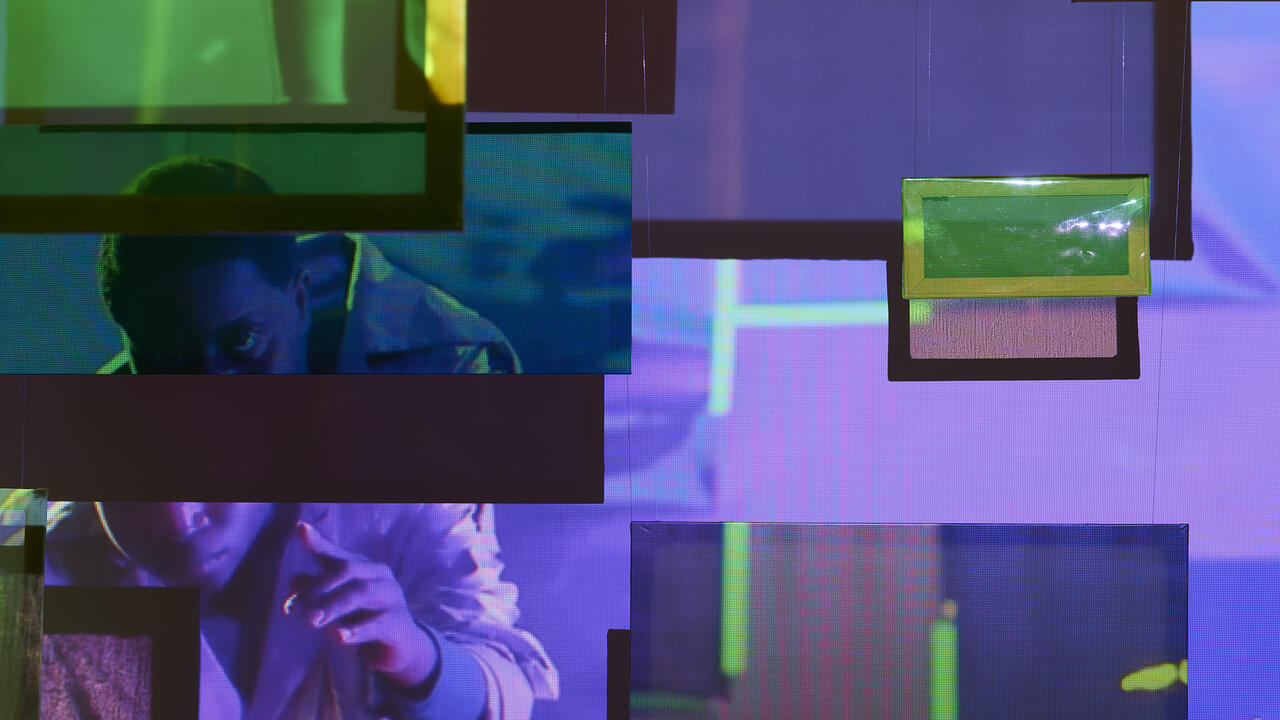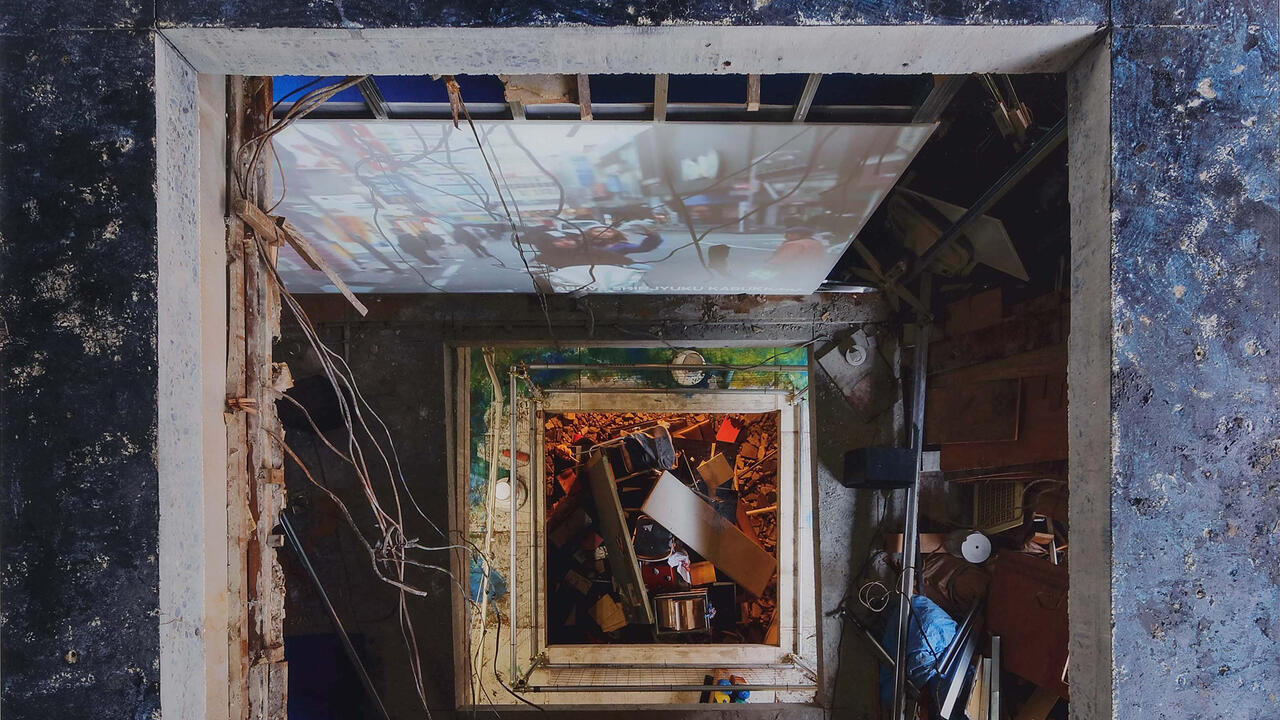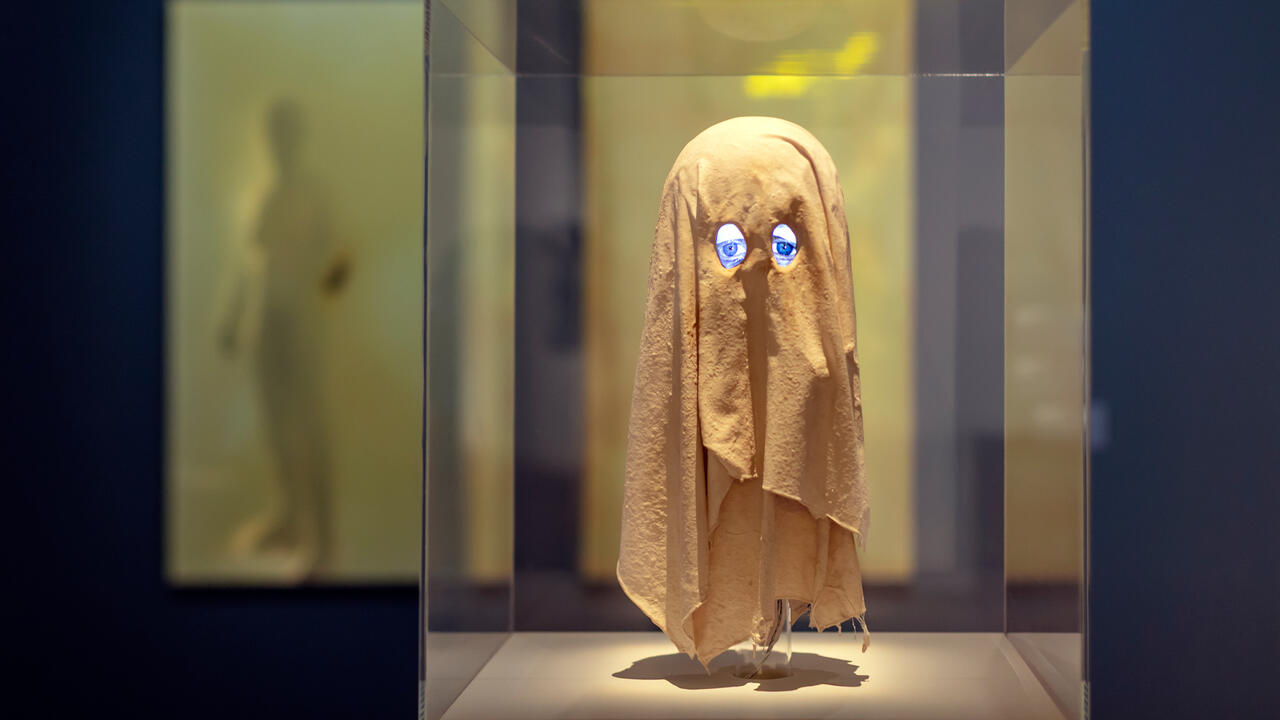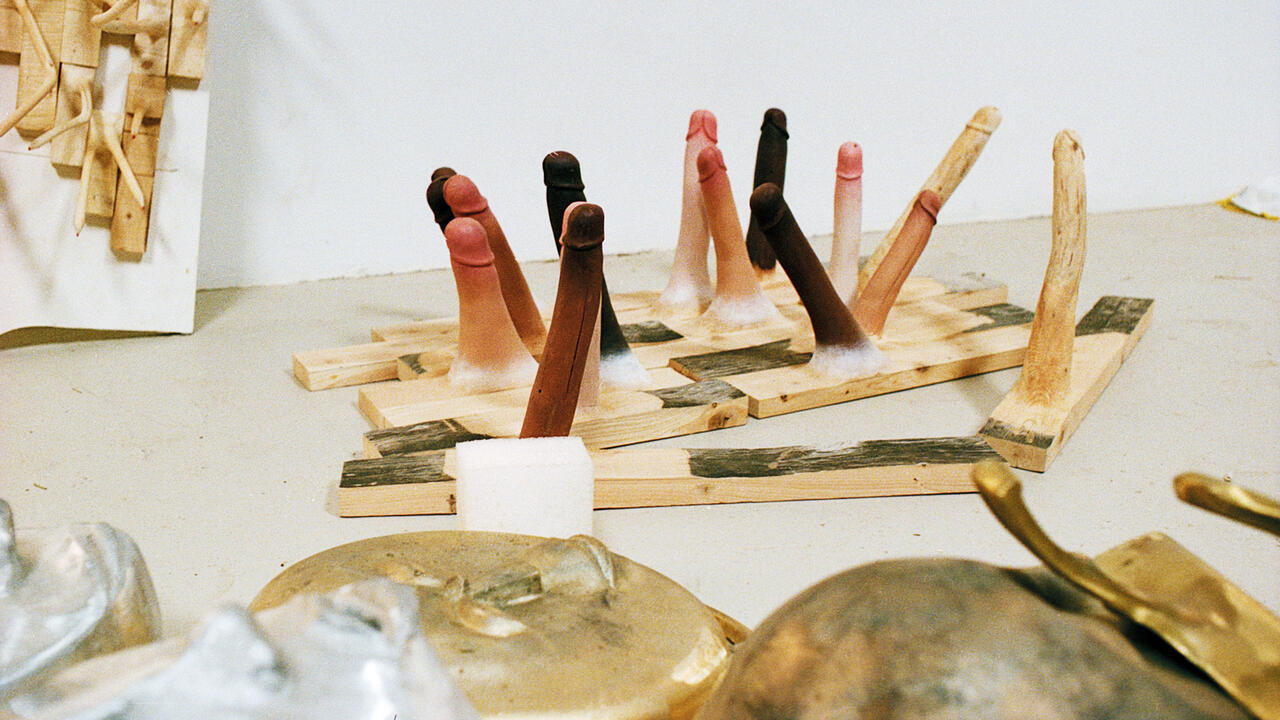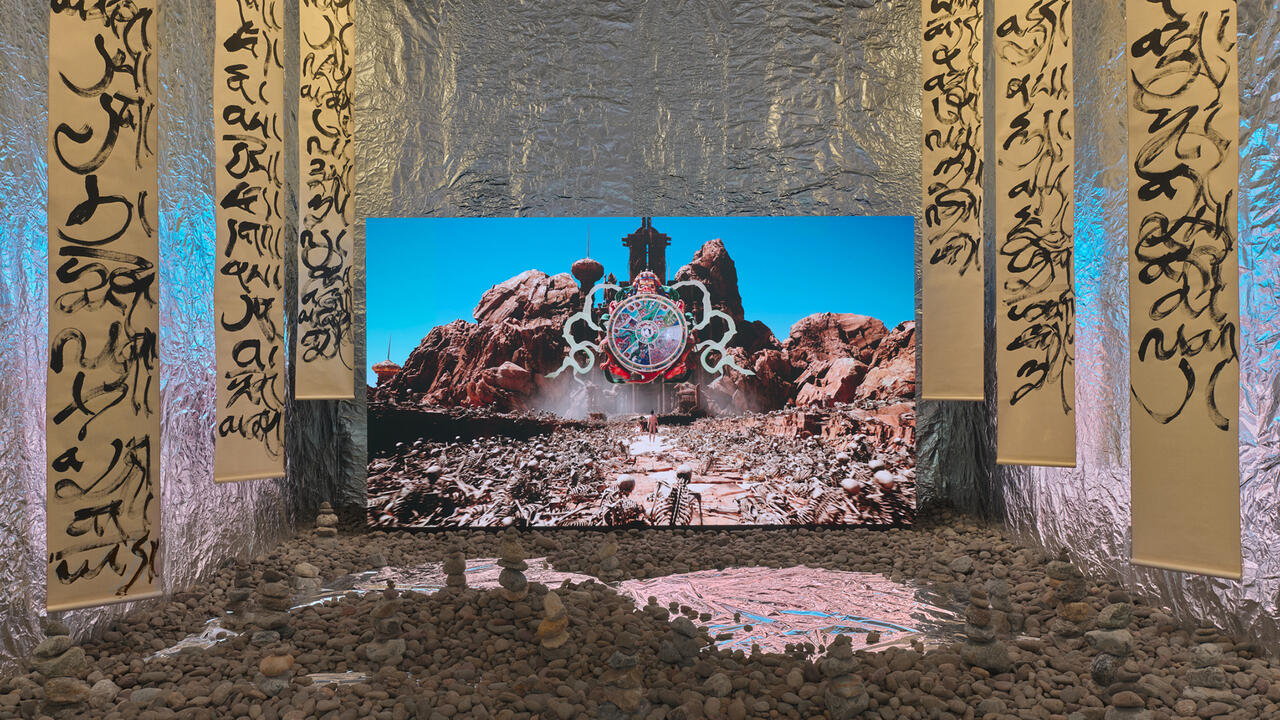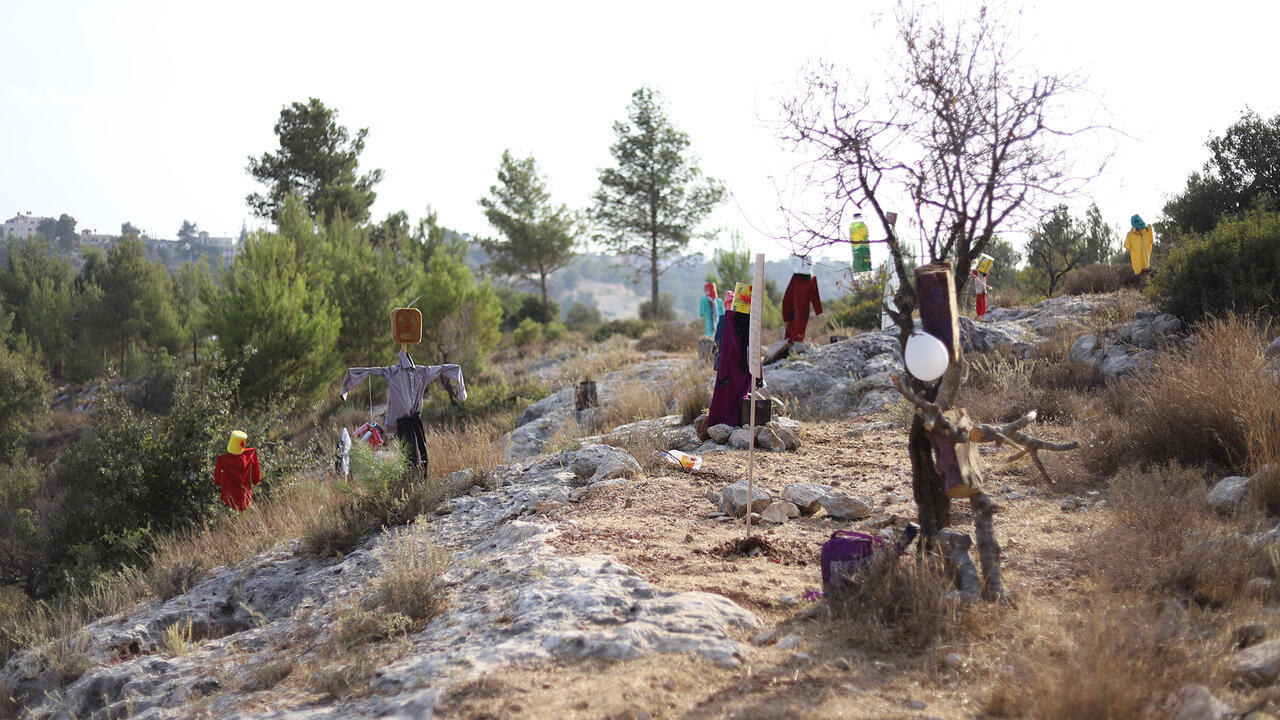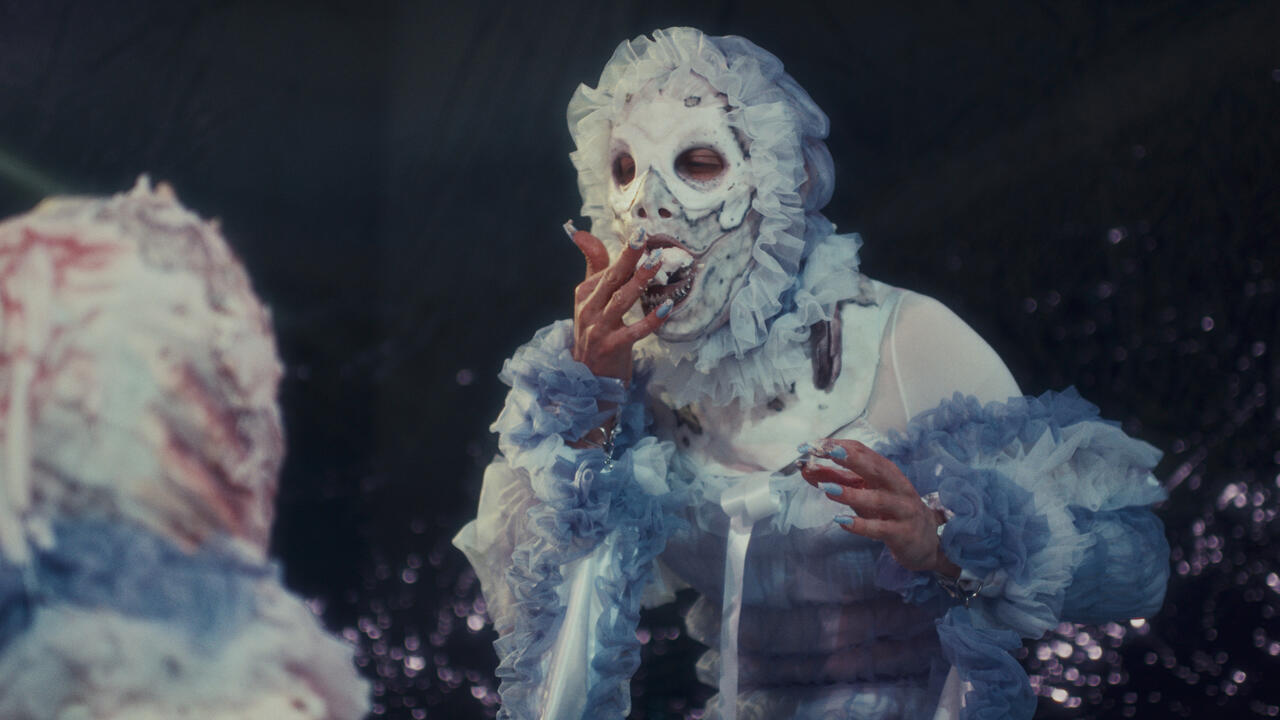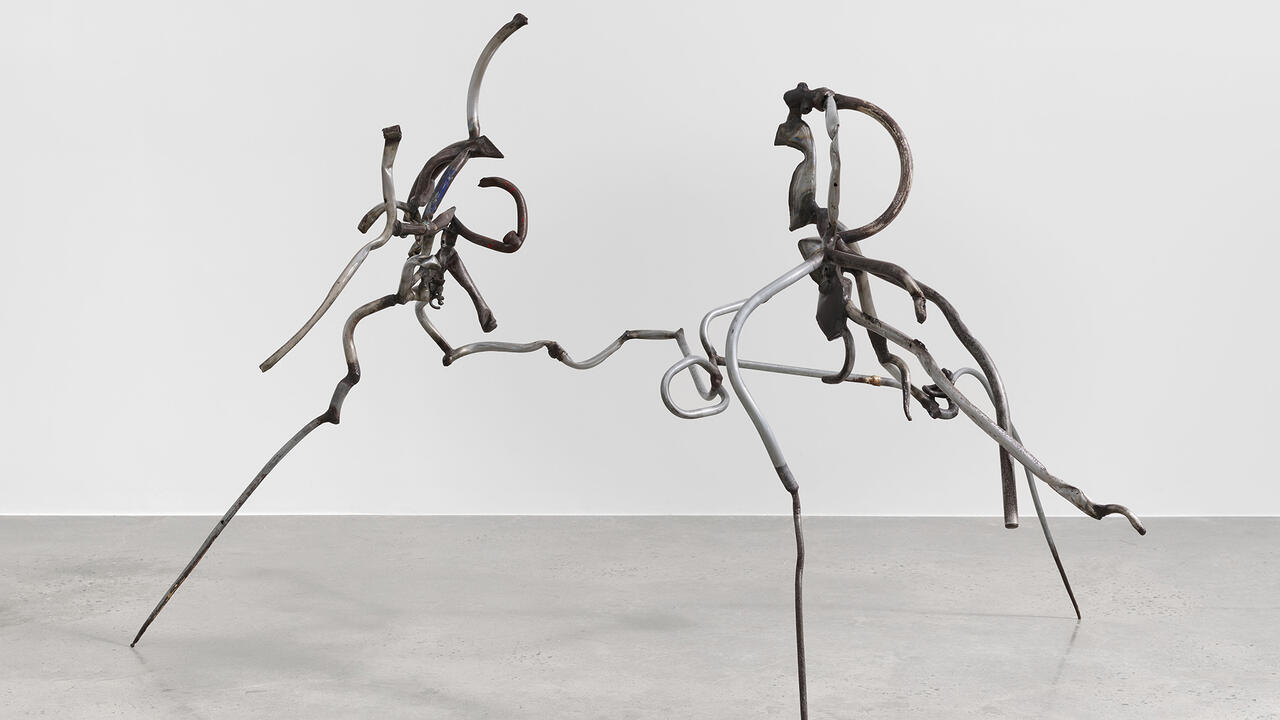Critic's Guide: The Best of the Gallery-Share Shows On Now in New York
Highlights from Condo New York 2018 and Commonwealth and Council at 47 Canal: the summer shows to see
Highlights from Condo New York 2018 and Commonwealth and Council at 47 Canal: the summer shows to see

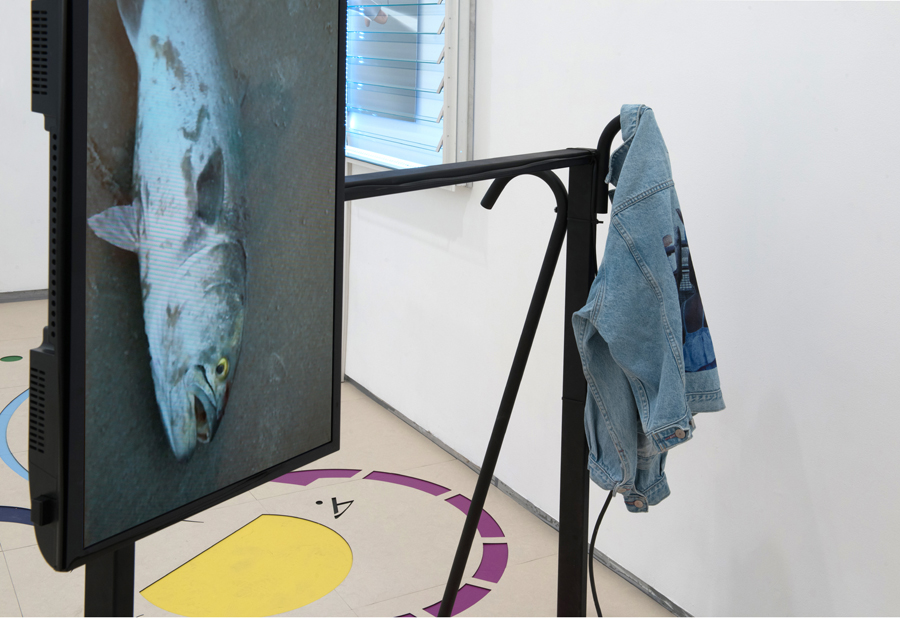
Simone Subal
Hosting Sadie Coles HQ, London
Anna K.E.’s video sculpture What Ocean Is (2016–18) comprises a monitor placed on metal bars resting on a laser-cut linoleum floor affixed with coloured vinyl. Its markings indicate steps and positions, a reference to the artist’s training as a classical ballerina, but also to the notation of gestures more broadly: how can movement be marked, and how, in turn, can these markings index meaning? The videos embedded in her two installations here offer only further complications: the artist clutches a flattened cardboard box under her arm, jerking her body like a weathervane in the wind. Nearby, spray-painted sneakers or a flung denim jacket sit and hang respectively, awaiting their animus into action. On the gallery’s walls, Daniel Sinsel’s trompe l’oeil paintings lend whimsy to K.E.’s Raymond Roussel-like private language. Made on linen with oil paint, they are littered with small details – patches of leaves and cherry stones, circles of cut glass, a scrawled fig – that recall Laura Owens’s late ’90s paintings interspersed with bees, monkeys, and other airbrushed critters.
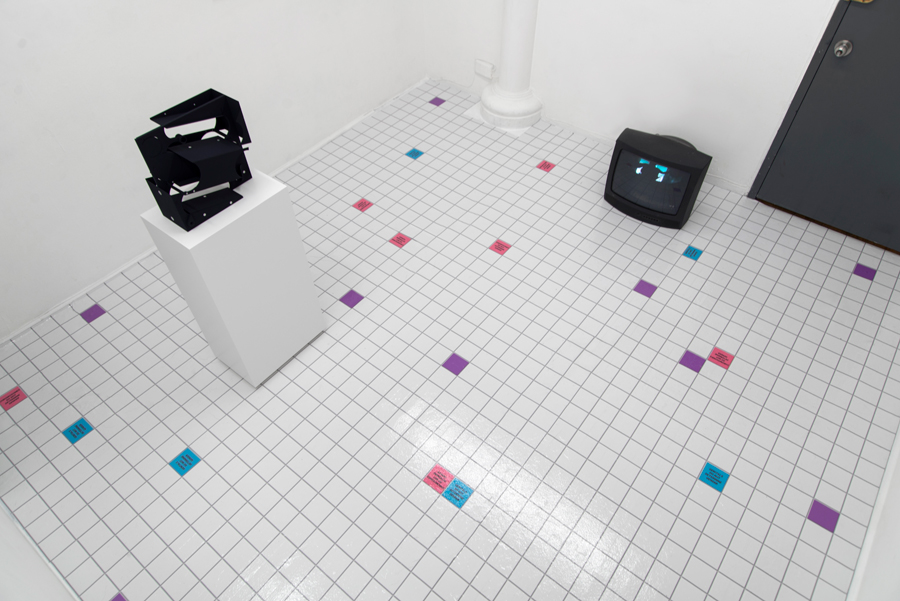
Queer Thoughts
Hosting Park View/Paul Soto, Los Angeles/Brussels
Puppies Puppies is an artist for our time, in part because of their age (b.1989), but mostly because their finger rests firmly on the pulse of our collective wokening. Enter the gallery, slip on a pair of blue shoe covers and slide across the laminate floor vinyl, on which is inscribed some updated truisms that nevertheless bear repeating: CHROMOSOMES DO NOT DETERMINE GENDER, GENITALS DO NOT DETERMINE GENDER. Or turn to another work by the artist, a .38 Llama Revolver Model XII used by the military and police. Permanently disabled and mounted on a wall, it is titled Trigger. Diamond Stingily’s (b.1990) minute-long video on loop on a monitor rests on the floor. It is what Hito Steyerl would describe as a ‘poor image’, and is intentionally so – its inscrutability and repetitiveness is mesmerizing. On the opposite wall hangs a 2018 painting by Alex Olson – a generation just above these two, but whose paintings succeed with measured tones and carefully balanced compositions.

Bortolami
Hosting Corbett vs. Dempsey, Chicago
The Los Angeles based painter Rebecca Morris is a champion and perverter of the grid. It appears plainly and then obliquely in two untitled paintings here, both from 2018. In its more straightforward iteration, Untitled (#01–18), the grid functions as ground for the milky lavender and white striations of spray paint that pool behind interlocking lines of thin silver. The grid then serves as inspiration from which to diverge, splendidly and with aplomb, for a larger canvas whose main thrust is movement. For Untitled (#04–18), Morris has taken familiar points of experimentation from her previous work – geometric shapes shaped like sails or fins, patches of colour patterned in distinct yet amorphous fields – and thrust into them a dynamism and energy that feels both unprecedented and yet entirely in character. Here, composition becomes something less learned and more willed: a force to fit within the confines of the canvas. Walk into an adjoining gallery and witness this break from the canvas in a more literal sense, in Ed Flood’s Diamondback (1980). A cluster of curved acrylic-on-wood components, the installation reflects the post-minimalist approach that Flood, who was an initial member of Chicago Imagist group Nonplussed Some, made after moving to New York in the 1970s.

Bridget Donahue
Hosting Experimenter, Kolkata
The artists gathered by Prateek and Priyanka Raja of Kolkata’s Experimenter, here on the Bowery, take as their departure the various iterations of architectural form, from concept to production. Rathin Barman’s untitled drawings of an edifice’s interior collide with perspectives of its inner trappings; interspersed within each are small zones of brass and pumice. Kanishka Raja’s Drawing for Control 10 (From Bauhaus to My House) (2016–17) are presented in the typically brilliantly hued blue common to architectural plans, but with added flourishes in a Piet Mondrian palette, making these layouts teem with life: a tiled floral pattern here, a Moroccan lining there. Ayesha Sultana’s suite of watercolours, elemental and spare, offers considerations of shapes in both scalar and vector dimensions; they too are rendered in a cool, baby blue. If a model consists of shapes with the aspirations of form, these aspirations spring to life in Sahil Naik’s untitled wall-mounted sculptures of rusted brass, decorated with the interlocking jali pattern typical of South Asian architecture.
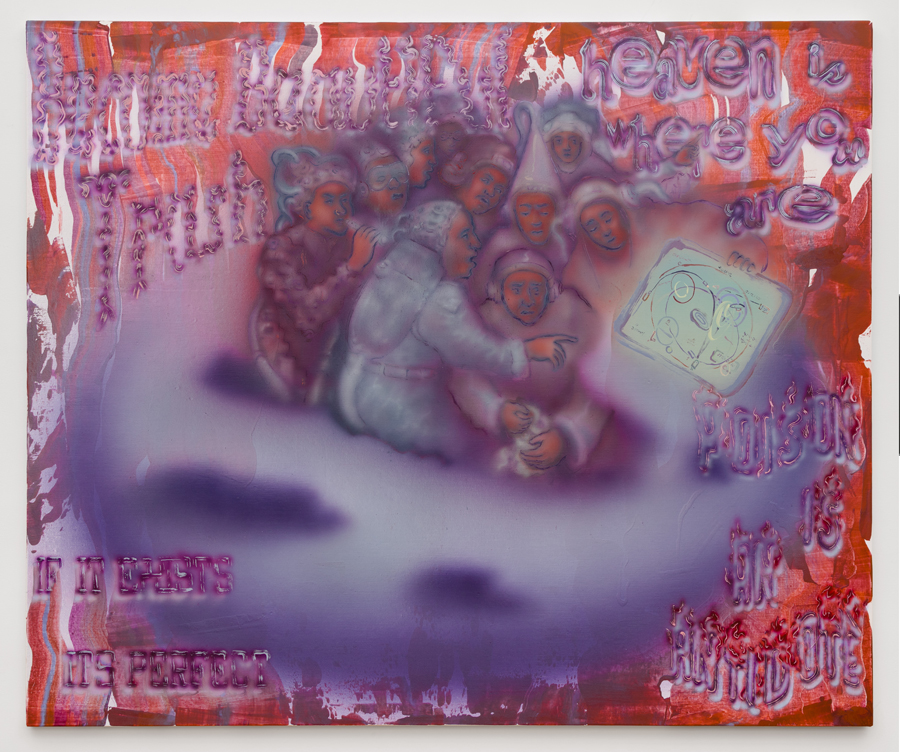
Foxy Production
Hosting Christian Andersen, Copenhagen and Edouard Malingue Gallery, Hong Kong, Shanghai
Given the state of things, and the things the State has wrought, one might well crave an escape. Sven Loven’s two paintings here, Thoughts are cosmetic and Trip to Mars (both 2018) are acidic journeys to transport us out of present time and into some nebulous cloud. Warped, weird, and way out, they beckon like club flyers, promoting a hedonism inspired by the twisted cabal of Hieronymous Bosch’s 1561 Concert in the Egg. A Tom Humphreys sculpture props herself on an elbow nearby, coolly awaiting her ticket out; her washed-surface and attenuated limbs suggest that she has emerged from some other depths. Works by Edouard Malingue Gallery’s Zheng Zou, whose three oil paintings here are crowded with haunted and haunting figures, celebrate a similar danse macabre. Ominous figures hover over each other, point to the sky, and reach above the crowd; they too, are trying to grasp meaning from the cosmos, and why shouldn’t they? There’s only so much hell we can take on earth. Among these works, Jeremy Everett’s excellent degradé paintings on blankets – in shades of rose and blue, shimmering and somber – read here like aura colour tests, as if to say: have a little faith – in anything.

Van Doren Waxter
Hosting Grey Noise, Dubai and Maisterravalbuena, Madrid/Lisbon
The five artists presented at Van Doren Waxter’s presentation of Grey Noise and Maisterravalbuena differ in medium (watercolour on paper, acrylic on canvas, sculpture) but each reflect upon, in austere and precise ways, the limitations and possibilities afforded by their chosen materials, raising the bar for the group show as a genre. Lahore-based Fahd Burki’s serene abstract canvases of periwinkle, taupe, and white are an automatic standout, evocative of the minimalism espoused by Agnes Martin and Nasreen Mohamedi, with subtle and distinct moments of candid departure from both. Joana Escoval’s razor-sharp installations comprising gold, wood, and glass occupy a similar position on the axis of pared-down artist’s touch; each component of her sculptures pristinely complements the other, to an overall numinous effect. Rounding out the exhibition are paintings by Néstor Sanmiguel Diest, with swelling abstract shapes just contained by their canvases, and a series of watercolours and resin works on paper by Caetano de Almeida depicting torn caning patterns. While the majority of de Almeida’s works on paper are in muted tones of brown, CAA-006 (2016), wraps around its canvas in a deep Yves Klein blue, accentuating the white canvas beneath and anchoring the work as a focal point amongst the other strong works in the exhibition.

47 Canal
Hosting Commonwealth and Council, Los Angeles
Gallerist duo Margaret Lee and Oliver Newton present a group exhibition at their Grand Street location with the Los Angeles based gallery Commonwealth and Council (the two-part exhibition is also hosted at Tina Kim Gallery). Of particular note is Young Joon Kwak’s metallically sheened sculpture created from casting male sex toys – so many impressions of vaginas form the surface – but the resulting formation is neither yonic nor libidinal, rather a captivating exegesis of the troubling weight we assign to genitalia. There’s a more genitalia in Kenneth Tam’s 2011 video The compression is not subservient to the explosion; it gives it increased force, but here the focus is on the artist’s deadpan register and interaction with an unseen interlocutor as they navigate a muted dance of sexual tension. The show’s most puzzling, and puzzlingly endearing works are by Carmen Argote, whose Dingbat Theater (2016) consists of an amalgamation of cardboard, dolls, photographs, jewelry, toys, and a red wig, functioning as a sort of shrine of memorabilia. They are arranged by the artist’s sister Alejandra, who can be seen at work making these objects in the video Arranging the Alex Theater (2016). Orbiting a location somewhere between sentimentality and kitsch, these works are nonetheless wholly inviting – echoing the spirit of hospitality espoused by Condo, though not officially in its domain.
Condo New York 2018 runs until 27 July; Commonwealth and Council at 47 Canal runs until 3 August.








